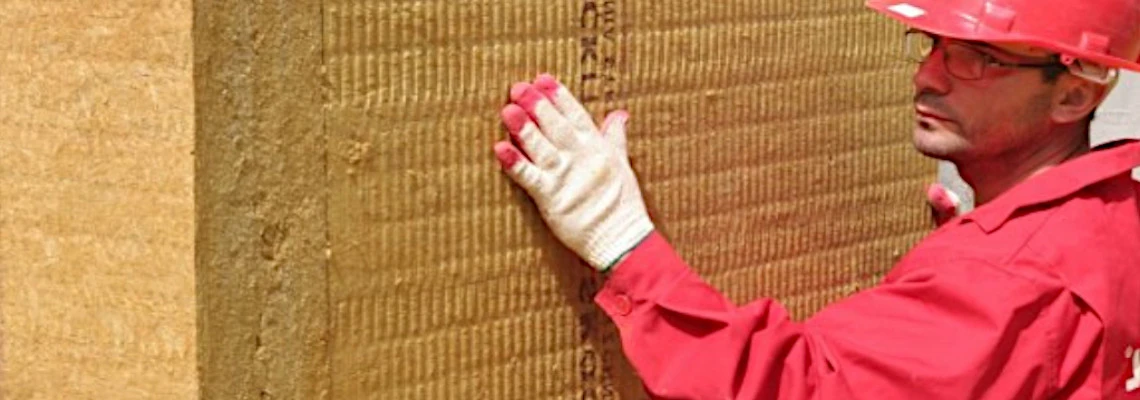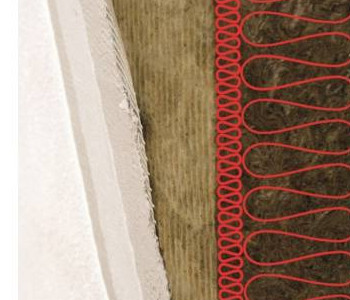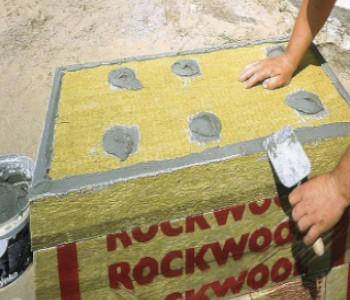
What to choose for external facade?*
The key elements in external wall insulation are the insulation material and the type of render finish.
There are so many different names and systems out there that it is easy to get confused.
Only few insulation boards that can be used in external wall insulation systems, including EPS, Rockwool Dual Density mineral wool and Kingspan K5.
Let’s take a closer look at just one on them – Rockwool Dual Density Mineral Wool.
We really like the Rockwool Dual Density slabs here at the InsulationGo, as they are better acoustically than other insulation boards and also offer great thermal performance. ROCKWOOL board delivers a number of benefits beyond thermal performance in external walls, such as best in class fire resistance, exceptional noise reduction, water repellence as well as vapour permeability, and dimensional stability - meaning excellent fit and real world performance, for the lifetime of the building.
What is Rockwool Dual Density ?
Rockwool Dual Density is a flush fitting, fully hydrophobic slab made from volcanic rocktype created for external wall applications to go directly under render. Once the insulation boards are stuck to the wall, mechanical fixings are installed through the boards in to the wall to ensure there is no chance of them coming away from the wall over time. Due to its high-pressure strength, it is preferred on facades which are exposed to mechanical pressure, such as those on public buildings.
What is Dual Density technology?
It simply means that the outer surface of each slab features a distinctly higher density than the underside. This provides a firm and robust surface for the application of fixings, while the resilient underside can accommodate unevenness in the substrate.
Will Rockwool DD board stop noise from street?
Rockwool board has very good acoustic properties which helps reduce the noise transmission from outside into the dwelling units.
The change in density between the two layers provides an additional benefit in that it causes sound waves to be reflected at the interface, further enhancing the acoustic performance.

Why choose Rockwool for external wall insulation ?
ROCKWOOL has pioneered innovative Dual Density technology through a specialist manufacturing process. Dual Density has comprised high-density outer layer (which is visibly marked) and a lower-density sub-layer. The lower-density inner layer reduces board weight, allowing it to better adapt to wall irregularities. Resilient surface is for accepting mushroom-head fixings, whilst the underside absorbs any imperfections or unevenness in the substrate. Robust outer surface and inner face are also an effective protection against adverse weather conditions.
What kind of savings can I expect from Rockwool Dual Density boards?
A minimum of 100mm of Rockwool DD boards need to be added as part of the insulation system to take the u-value of the wall to 0.3W/m2k or better. This amount of insulation will reduce your heating bill by half.
You will get savings down of approximately 30%. Due to its excellent lambda value, we achieve a 15% better U-value for the external wall, as if we were using the same insulation thickness of the standard EPS.
You can always install more than this if you want even greater energy savings!
Is Dual Desity Board Non-combustible?
The insulation boards have achieved a Euroclass rating of A1 for non-combustibility – this is the highest rating that an insulation material can achieve. With fire-safety being so topical and of such importance, the Rockwool insulation goes extra lengths to offer complete assurance against the threat of fire. With its ability to withstand temperatures of up to 1,000ºC, it is not flamable when exposed to open flame and does not generate smoke nor burning droplets. It helps to prevent spread of fire too.
How to install Rockwool dual density boards?
We recommend the boards to be fixed to the substrate with mortar/adhesive and mechanical fixings to ensure maximum adhesion. The higher density surface of the slab is to take the render. It is indicated with ROCKWOOL logo or a line and should always face outwards.

What about joints?
The fibres of adjacent slabs knit together when tightly butt jointed, eliminating any gaps through which heat can be lost.
*All the information provided in the content published on Insulationgo blog is for informational and educational purposes only. Insulationgo LTD makes every effort to ensure the accuracy and timeliness of the content, but we do not assume any responsibility for any errors or omissions.
The information presented on this blog should not be considered as professional advice or a substitute for consulting relevant experts. Before making any purchase decisions or taking action based on the information presented here, it is strongly recommended to contact the product manufacturer directly to verify the details and ensure its suitability for your specific needs.
By using this blog, you acknowledge and agree that Insulationgo LTD shall not be held liable for any damages, losses, or inconveniences arising from the use or reliance on the information provided herein. This limitation of liability applies to all users of the blog, including but not limited to visitors, readers, and subscribers.










































































































